Paraíba Tourmaline
Paraíba tourmaline is a rare and highly valued variety of tourmaline, renowned for its striking and vivid blue to greenish-blue colors. It is characterized by its vibrant hues, which are due to the presence of copper in its crystal structure, setting it apart from other tourmalines. This gemstone typically displays a rich, electric blue or turquoise blue, sometimes with a hint of green, making it one of the most sought-after gemstones in the world.
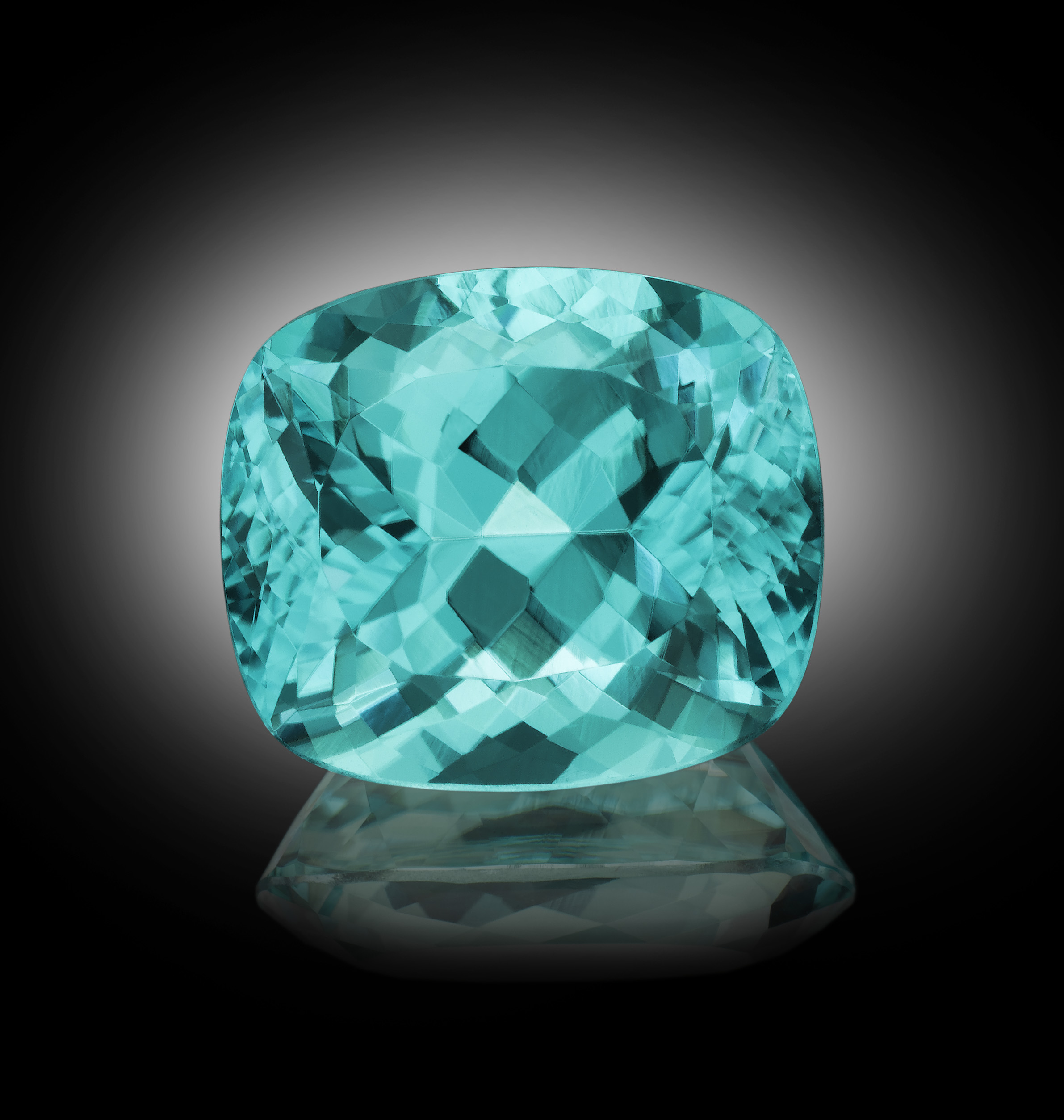
The mineral tourmaline is a complex borosilicate with a wide range of colors and variations, but Paraíba tourmaline is distinguished by its unique color and rarity. The intense colors are often compared to the finest sapphires, but the copper-infused Paraíba tourmaline has a distinctive brilliance and saturation that is unmatched.
Historical Context
Paraíba tourmaline was first discovered in the early 1980s in the Paraíba state of Brazil, which is how it got its name. The initial find was in a small mining area near the town of São José da Batalha. The gem’s discovery was a significant event in the gemological world because it introduced a previously unknown range of colors and properties to the tourmaline family.
The gemstone’s popularity surged due to its extraordinary color and rarity. The mines in Brazil produced high-quality specimens, but the supply was limited, leading to high demand and increasing prices. This initial period of discovery and excitement established Paraíba tourmaline as a luxury gemstone.
In addition to Brazil, another significant deposit of Paraíba tourmaline was later discovered in Nigeria in the early 2000s, and another find was reported in Mozambique. These sources have contributed to the gemstone’s availability but have not diminished its status or value. Each deposit produces tourmalines with slightly different characteristics, but all are valued for their vibrant colors.
Paraíba tourmaline’s rarity, coupled with its unique color, has made it a highly coveted gemstone among collectors and jewelers alike. The gemstone’s allure is further enhanced by its association with exotic locales and its relatively recent addition to the pantheon of precious gemstones.
Geological Formation

Origin of Tourmaline
Tourmaline is a complex borosilicate mineral that forms in a variety of geological environments. It is a member of the silicate group and comes in a wide range of colors due to the presence of various trace elements. The mineral’s general chemical formula is (Na,Ca)3(Al,Fe,Li)6(BO3)3(Si6O18)(OH)4(Na, Ca)_3 (Al, Fe, Li)_6 (BO_3)_3 (Si_6O_{18}) (OH)_4(Na,Ca)3(Al,Fe,Li)6(BO3)3(Si6O18)(OH)4, with variations in composition leading to different types of tourmaline.
Tourmaline typically forms in pegmatitic environments, which are coarse-grained igneous rocks that develop from the crystallization of magma. Pegmatites are characterized by their large crystals and can host a wide range of minerals, including tourmaline. The conditions that lead to the formation of tourmaline include high temperatures and pressures within these pegmatites, which allows the formation of its complex crystal structure.
Additionally, tourmaline can form in metamorphic rocks through the alteration of pre-existing minerals in the presence of boron and other elements. In these cases, the mineralization occurs under high temperature and pressure conditions, contributing to its diverse colorations and forms.
Specific Formation of Paraíba Tourmaline
Paraíba tourmaline is notable for its intense blue to greenish-blue colors, which are primarily attributed to the presence of copper. This specific variety of tourmaline has a distinct geological formation process:
- Copper Infusion: The defining characteristic of Paraíba tourmaline is the incorporation of copper into its crystal structure. In the Paraíba deposits, copper is found in trace amounts within the tourmaline’s structure, which imparts the vivid blue and greenish-blue hues. The copper replaces other elements, such as iron, which would otherwise result in different colors.
- Geological Setting: Paraíba tourmaline was first discovered in the Brazilian state of Paraíba in a relatively small and localized area. The gem occurs in a specific type of pegmatite, which has unique geochemical conditions favorable for copper-bearing minerals. These conditions are rare and contribute to the gemstone’s exclusivity.
- Formation Conditions: The formation of Paraíba tourmaline involves a combination of high-temperature conditions and the presence of copper-rich fluids. As magma cools slowly, it creates the ideal environment for the growth of tourmaline crystals with a copper-rich composition. These conditions are quite specific and not commonly found, which is why Paraíba tourmaline is so rare.
- Deposits in Other Locations: After the initial discovery in Brazil, Paraíba tourmaline was also found in Nigeria and Mozambique. In these regions, the formation process is similar, involving the presence of copper in the pegmatitic or metamorphic environments. However, the exact conditions and trace element concentrations vary, resulting in slight differences in color and quality.
The rarity and vivid color of Paraíba tourmaline make it a highly prized gemstone, with its formation closely tied to the specific geological and chemical conditions of its deposits.
Characteristics and Properties of Paraíba Tourmaline

Paraíba tourmaline is celebrated for its unique and striking appearance, which sets it apart from other varieties of tourmaline and gemstones in general. Below are the key characteristics and properties that define this exceptional gem:
1. Color
- Hue: Paraíba tourmaline is renowned for its vibrant blue to greenish-blue hues. The color can range from a bright turquoise blue to a deep, electric blue, sometimes with greenish overtones. The presence of copper gives it a distinctive and intense coloration.
- Saturation: The saturation of color in Paraíba tourmaline is typically very high, resulting in a vivid and eye-catching appearance. This intensity of color is a major reason for its high value.
- Tone: The tone of Paraíba tourmaline can vary from medium to dark, but it is usually bright and rich. The tone complements the high saturation to create a gemstone that is visually striking.
2. Transparency
- Clarity: Paraíba tourmaline is usually transparent to translucent. High-quality specimens are often very clear, though inclusions and internal features are not uncommon. These inclusions can sometimes appear as needle-like structures or small crystal inclusions.
- Brightness: The gemstone has a high level of brilliance due to its transparency and the way it interacts with light. Its vibrant color and excellent light dispersion contribute to its overall luster and sparkle.
3. Crystal Structure and Shape
- Crystal System: Tourmaline, including Paraíba tourmaline, crystallizes in the hexagonal system. This results in a distinctive elongated or columnar crystal shape.
- Habit: Paraíba tourmaline crystals typically form as elongated prisms, though they can also appear as short or stubby crystals. The crystals often exhibit striations along their length, which are parallel lines or grooves on the crystal surface.
4. Hardness and Durability
- Hardness: On the Mohs scale of hardness, Paraíba tourmaline rates between 7 and 7.5. This makes it a relatively durable gemstone suitable for various types of jewelry, though care should be taken to avoid hard impacts.
- Durability: The gemstone is generally quite durable but can be susceptible to scratching and abrasion. It is best suited for rings, earrings, and other jewelry pieces that are worn less frequently or carefully.
5. Specific Gravity
- Density: The specific gravity of Paraíba tourmaline ranges from approximately 3.06 to 3.20. This is a measure of the gem’s density relative to water, and it can be used to help identify the gemstone.
6. Refractive Index
- Refractive Index: Paraíba tourmaline has a refractive index range of about 1.624 to 1.644. This property affects how the gemstone bends and reflects light, contributing to its brilliance and sparkle.
7. Pleochroism
- Pleochroism: Tourmaline gemstones, including Paraíba, often exhibit pleochroism, which means they can show different colors when viewed from different angles. This can enhance the gem’s visual appeal as its color may shift slightly depending on the viewing angle.
8. Fluorescence
- Fluorescence: Paraíba tourmaline can exhibit fluorescence under ultraviolet (UV) light due to its copper content. This can cause the gemstone to glow with a different hue, though not all specimens display this property.
Paraíba tourmaline’s combination of vibrant color, clarity, and brilliance makes it a highly desirable gemstone for collectors and jewelers. Its unique properties, particularly the vivid blue and greenish-blue colors derived from copper, contribute to its rarity and high value.
Color and Its Causes

Copper-Induced Color
Paraíba tourmaline’s distinctive and vibrant blue to greenish-blue color is primarily due to the presence of copper in its crystal structure. Copper is a trace element that can replace other elements in the mineral’s lattice, such as iron or magnesium, which are responsible for the colors in other varieties of tourmaline.
- Copper’s Role: Copper ions (Cu²⁺) in the tourmaline crystal lattice absorb certain wavelengths of light, leading to the gemstone’s intense blue or greenish-blue hue. This color is notably different from other blue gemstones, such as sapphires or blue zircon, because of the unique interaction of copper with the mineral’s structure.
- Mechanism: The color arises from charge-transfer transitions between copper ions and surrounding ligands (such as oxygen). The specific wavelengths of light absorbed by these copper ions are responsible for the gemstone’s vibrant and eye-catching coloration.
Comparison with Other Tourmaline Colors
Tourmaline is a diverse mineral with a wide range of colors, each caused by different trace elements and combinations. Here’s how Paraíba tourmaline compares with other tourmaline varieties:
- Elbaite Tourmaline: This is the most common species of tourmaline and includes a range of colors, such as pink, green, and blue. For example, indicolite (blue tourmaline) gets its color from iron, resulting in a typically darker, less vivid blue compared to Paraíba.
- Chrome Tourmaline: Found in green hues, chrome tourmaline gets its color from chromium. These greens can be rich and vibrant but are generally different from the blue-green shades of Paraíba tourmaline.
- Watermelon Tourmaline: This variety features a pink center with green rims, caused by different trace elements in the same crystal. Its color pattern is unique and does not overlap with the blue hues of Paraíba.
- Pink Tourmaline: The pink color in this variety is typically due to the presence of manganese. It has a softer and often more pastel color compared to the vividness of Paraíba tourmaline.
Impact of Color on Value
The color of Paraíba tourmaline is a major determinant of its value. Here’s how color affects its market price:
- Intensity and Saturation: The most valuable Paraíba tourmalines exhibit the most intense and saturated colors. Rich, electric blues and greenish-blues with high color saturation command the highest prices. Stones with more subdued hues or less saturation are generally less valuable.
- Hue: Pure blue is often considered the most desirable, but slight variations toward green can also be valuable. The ideal hue is a bright, clear blue with minimal green or gray undertones.
- Color Consistency: Uniform color throughout the gemstone adds to its value. Paraíba tourmalines that have a consistent and vibrant color without noticeable color zoning or inclusions are highly prized.
- Size and Clarity: While color is crucial, larger stones with excellent clarity also command higher prices. However, even smaller Paraíba tourmalines can fetch high prices if they exhibit exceptional color.
In summary, the copper-induced color of Paraíba tourmaline sets it apart from other tourmaline varieties and contributes significantly to its value. Its vibrant hues, combined with factors such as color intensity and consistency, play a crucial role in determining the gemstone’s desirability and market price.
Sources and Mining of Paraíba Tourmaline

Paraíba tourmaline is one of the rarest and most sought-after varieties of tourmaline, and its sources are key to understanding its rarity and value. The primary sources of Paraíba tourmaline are concentrated in a few regions known for their high-quality deposits. Here’s an overview of the main sources and mining practices associated with Paraíba tourmaline:
1. Brazilian Deposits
Paraíba State:
- Discovery: The original and most famous source of Paraíba tourmaline is the Paraíba state in Brazil. The gemstone was first discovered here in 1987 by a Brazilian miner named Heitor Dimas Barbosa.
- Mining Areas: The key mining areas in Paraíba include São José da Batalha and the nearby regions. These deposits were the primary source of the intense blue and greenish-blue Paraíba tourmaline that first gained international acclaim.
- Mining Techniques: In the Paraíba state, mining operations typically involve artisanal and small-scale mining methods. The mining process often includes manual digging and washing of gravel from pegmatitic deposits. This labor-intensive approach has contributed to the gem’s rarity, as the deposits are limited in size.
Other Brazilian States:
- Minas Gerais: After the initial discovery in Paraíba, other significant deposits were found in Minas Gerais, a state known for its rich mineral resources. Although these deposits also produce high-quality Paraíba tourmaline, they are less renowned than the original Paraíba sources.
- Exploration: Exploration in these regions continues, but high-quality Paraíba tourmaline remains rare, and new finds are infrequent.
2. Nigerian Deposits
Discovery:
- Location: Significant deposits of Paraíba tourmaline were discovered in Nigeria in the early 2000s. These deposits are primarily located in the northern region of the country, particularly in the state of Bauchi.
- Characteristics: Nigerian Paraíba tourmalines are known for their vivid colors, similar to those from the original Brazilian deposits. However, there are subtle differences in hue and saturation due to varying geological conditions.
Mining Techniques:
- Modern Methods: Mining in Nigeria often involves more modern techniques compared to traditional methods used in Brazil. This includes both artisanal and small-scale mining, as well as more organized commercial operations.
- Challenges: The mining sector in Nigeria faces challenges such as regulatory issues, environmental concerns, and safety conditions, which can impact the consistency and quality of the gemstones.
3. Mozambican Deposits
Discovery:
- Location: In the late 2000s, Paraíba tourmaline deposits were discovered in Mozambique, primarily in the northern region of the country. This discovery added a new source of Paraíba tourmaline to the market.
- Characteristics: Mozambican Paraíba tourmaline is valued for its bright and vivid colors. While similar to Brazilian and Nigerian stones, there are differences in the shades of blue and green due to the unique geological conditions of the region.
Mining Techniques:
- Techniques: Mining in Mozambique involves both artisanal methods and more organized commercial mining. The industry in Mozambique has seen significant growth, with various international and local companies operating in the region.
- Regulations: Efforts are being made to improve mining practices and environmental management in Mozambique, though challenges remain.
4. Market Impact and Challenges
Rarity and Price:
- Rarity: The limited number of sources and the difficulty of mining high-quality Paraíba tourmaline contribute to its rarity and high value. As deposits are exhausted or become less productive, the rarity of Paraíba tourmaline increases.
- Price: The price of Paraíba tourmaline is influenced by its origin, with Brazilian stones often commanding the highest prices due to their historical significance and superior color. However, high-quality Nigerian and Mozambican stones can also be very valuable.
Environmental and Ethical Considerations:
- Environmental Impact: Mining activities, particularly in artisanal operations, can have significant environmental impacts, including habitat destruction and soil erosion. Efforts to mitigate these effects are ongoing.
- Ethical Issues: The gemstone industry faces challenges related to labor conditions and ethical practices. Responsible sourcing and certification processes are important for ensuring that gemstones are mined and traded ethically.
In summary, the sources and mining of Paraíba tourmaline are concentrated in specific regions of Brazil, Nigeria, and Mozambique. Each source has its unique characteristics and mining practices, contributing to the gemstone’s rarity and value. The challenges associated with mining, including environmental and ethical considerations, continue to shape the industry and the market for Paraíba tourmaline.
Uses and Applications of Paraíba Tourmaline

Paraíba tourmaline, known for its striking and vivid colors, is highly prized in the world of gemstones and jewelry. Its unique properties and rarity make it suitable for a variety of uses and applications, particularly in high-end and luxury contexts. Here’s a detailed look at its primary uses and applications:
1. Jewelry
Fine Jewelry:
- Rings: Paraíba tourmaline is often used in engagement rings, statement rings, and other fine jewelry pieces. Its vibrant color and brilliance make it a standout choice for center stones in rings.
- Necklaces and Pendants: The gemstone is also popular in necklaces and pendants, where it can be featured as a centerpiece or accent stone. Its color can add a splash of vivid blue or green to any jewelry piece.
- Earrings: Paraíba tourmaline is used in earrings, including stud, drop, and chandelier designs. Its eye-catching color enhances the visual appeal of the earrings and adds a touch of elegance.
- Bracelets: The gemstone can be set in bracelets, either as the primary gemstone or in combination with other stones. Its brilliance and color make it a luxurious choice for this type of jewelry.
Custom and Designer Jewelry:
- High-End Custom Pieces: Jewelers often use Paraíba tourmaline in custom-designed pieces, catering to clients seeking unique and luxurious jewelry. Its rarity and distinct color make it a popular choice for bespoke designs.
- Designer Collections: Many high-end jewelry designers incorporate Paraíba tourmaline into their collections, creating exclusive pieces that highlight the gemstone’s beauty and rarity.
2. Collectibles and Investments
Gemstone Collecting:
- Collector’s Items: Due to its rarity and striking appearance, Paraíba tourmaline is a coveted gemstone among collectors. High-quality specimens are sought after for their unique color and historical significance.
- Investment Stones: As a valuable and rare gemstone, Paraíba tourmaline can also serve as an investment. Its value tends to increase over time, especially for high-quality stones with exceptional color and clarity.
3. Fashion and Luxury
Luxury Accessories:
- Brooches and Pins: Paraíba tourmaline is sometimes used in luxury brooches and pins, where its vivid color can make a bold statement.
- Hair Accessories: The gemstone can be featured in hairpieces, such as tiaras and hairpins, adding a touch of sophistication and color to formal hairstyles.
High-Fashion Jewelry:
- Runway and Couture Designs: Fashion designers and high-end brands often feature Paraíba tourmaline in their couture collections, utilizing its vibrant color to make bold fashion statements.
4. Therapeutic and Metaphysical Uses
Healing Properties:
- Metaphysical Beliefs: Some people believe that Paraíba tourmaline, like other gemstones, has metaphysical properties. It is thought to promote emotional healing, enhance creativity, and bring positive energy. These beliefs, while not scientifically proven, contribute to the gemstone’s appeal for some individuals.
Personal Significance:
- Symbolic Use: For some, Paraíba tourmaline is chosen for its personal or symbolic significance. Its unique color and rarity can make it a meaningful choice for special occasions or personal milestones.
5. Industry and Science
Industrial Applications:
- Limited Use: While Paraíba tourmaline’s primary applications are in jewelry and collectibles, it is not commonly used in industrial or scientific applications. Its rarity and high value make it more suitable for decorative and luxury purposes.
Summary
Paraíba tourmaline is most renowned for its use in high-end and luxury jewelry, where its vivid colors and brilliance are highly valued. It is also a popular choice among collectors and investors due to its rarity and increasing value. In the realm of fashion, it enhances luxury accessories and couture designs. While it has limited industrial applications, its significance in jewelry and as a collectible gem highlights its unique place in the world of gemstones.
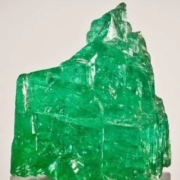
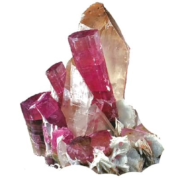
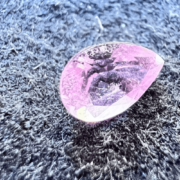
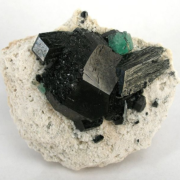
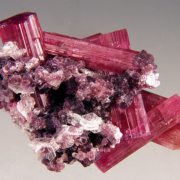
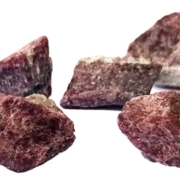


Leave a Reply
Want to join the discussion?Feel free to contribute!